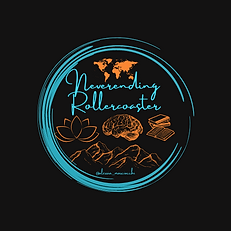Beyond the Mat: Understanding the True Essence of Yoga
- Alessia Masciocchi
- Sep 12, 2024
- 3 min read
Hello, beauties!
I've decided to continue deepening my knowledge of yoga and thought I'd like to share the most noteworthy parts with you. So what? Let's crush this post!
Yoga: A Journey Beyond Postures
Many people think of yoga as primarily a physical practice involving various postures. However, this ancient discipline encompasses far more than just flexibility and exercise. Let's explore the deeper aspects of yoga and discover what it truly means to follow this time-honoured path.
The Eight Limbs of Yoga: A Comprehensive Approach
Patañjali (पतञ्जलि, /pətəɲd͡ʒəli/), often referred to as the father of yoga, outlined the yogic path in eight stages. These stages provide a holistic approach to personal growth and spiritual development:
Yama (यम, /jəmə/): Universal ethical principles
Niyama (नियम, /nijəmə/): Personal observances for self-discipline
Āsana (आसन, /aːsənə/): Physical postures
Prāṇāyāma (प्राणायाम, /praːɳaːjaːmə/): Breath control techniques
Pratyāhāra (प्रत्याहार, /prətjaːhaːrə/): Withdrawal of the senses from external stimuli
Dhāraṇā (धारणा, /dʱaːrəɳaː/): Concentration
Dhyāna (ध्यान, /dʱjaːnə/): Meditation
Samādhi (समाधि, /səmaːdʱi/): A state of ecstasy or enlightenment
The Yogic Journey: From External to Internal
The first three stages of yoga focus on harmonising oneself with the external world and society. These are known as bahiraṅga sādhanā (बहिरङ्ग साधना, /bəhirəŋgə saːdʱənaː/), or the outward quest.
As one progresses, prāṇāyāma and pratyāhāra form the bridge between the outer and inner worlds. These practices, known as antaraṅga sādhanā (अन्तरङ्ग साधना, /əntərəŋgə saːdʱənaː/) or the inner quest, teach practitioners to regulate their breath and, in turn, their mind.
The final three stages delve deep into the realm of the soul. Through concentration, meditation, and ultimately samādhi, the yogi seeks to understand their true nature and connect with the Universal Spirit or Paramātmā (परमात्मा, /pərəmaːtmaː/).
Paths to Realisation: Suiting Different Temperaments
Yoga recognises that individuals may be drawn to different approaches based on their nature and inclinations:
Karma Mārga: The path of action and duty
Bhakti Mārga (भक्ति मार्ग, /bʱəkti maːrgə/): The path of devotion and love
Jñāna Mārga (ज्ञान मार्ग, /d͡ʒɲaːnə maːrgə/): The path of knowledge and wisdom
Yoga Mārga: The path of meditation and mind control
The Path to Happiness: Four Types of Individuals
Yogic philosophy recognises different paths to happiness, each suited to a particular type of individual:
The Discerning One: Happy is the person who can distinguish between the real and the unreal, the eternal and the transitory, the good and the merely pleasant through their wisdom and discrimination.
The Loving One: Twice blessed is the individual who understands true love and can extend it to all creatures, cultivating a heart full of unconditional affection and compassion.
The Selfless Server: Thrice blessed is the person who works tirelessly for the well-being of others, with love in their heart and no expectation of reward or recognition.
The Integrated Soul: Truly holy is the individual who, despite human limitations, combines knowledge, love, and selfless service in their life. Such a person is likened to the sacred confluence of the rivers Gaṅgā (गङ्गा, /gəŋgaː/), Sarasvatī (सरस्वती, /sərəsʋətiː/), and Yamunā (यमुना, /jəmunaː/). Encounters with this type of individual leave others feeling calm, purified, and inspired.
Each of these paths offers a unique approach to happiness, reflecting the diverse nature of human temperaments and spiritual inclinations. The yogic tradition suggests that the highest form of happiness comes from integrating all these qualities, but recognises that individuals may naturally gravitate towards one path or another in their journey towards fulfilment.
Rāja Yoga and Haṭha Yoga: Complementary Approaches
Two prominent branches of yoga are often discussed:
Rāja Yoga (राज योग, /raːd͡ʒə joːgə/): Often called the 'royal path', it focuses on controlling the mind and attaining self-mastery.
Haṭha Yoga (हठ योग, /həʈʰə joːgə/): A more physical approach that emphasises bodily discipline and purification.
While they may seem distinct, Rāja Yoga and Haṭha Yoga are actually complementary. Haṭha Yoga can be seen as a preparatory practice that creates the foundation for the higher states of consciousness sought in Rāja Yoga.
In conclusion, yoga offers a comprehensive system for personal growth, spiritual development, and self-realisation. Whether one is drawn to its physical aspects or its philosophical depths, yoga provides a rich tapestry of practices and insights that can transform one's life and perspective.
What are your thoughts on this? Your opinion matters! Give this post a like if you enjoyed it, and share your experiences in the comments below. I'm eager to read your insights!

Comentarios